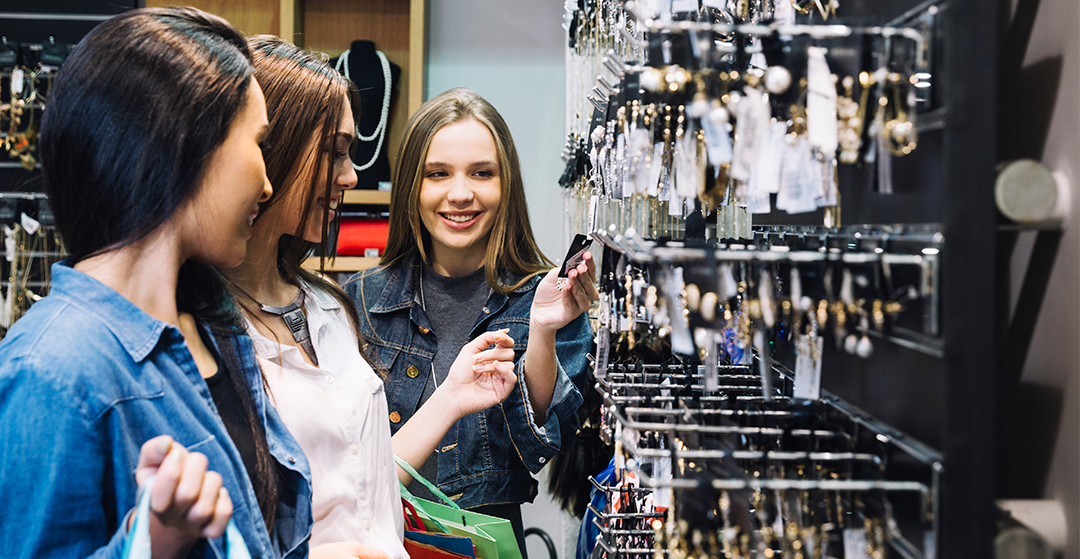
In the new report D/A Retail Tech Technologies at the point of sale, the evolution of store entrances and the profile of the new hybrid buyer is analyzed.
INCREASE IN BUYERS IN PHYSICAL STORES
According to data provided by TC Group Solutions, visits to establishments increased by 17% in 2022 compared to 2021. This increase is partly attributed to the increase in pedestrian traffic on the country's streets, which was 12.1% higher than the average recorded two years ago.
The technology firm shared data indicating that approximately 3,172 people walked through the country's commercial streets daily. The months of Black Friday and sales were the busiest, with December being the month with the highest pedestrian traffic, reaching a daily average of 3,772 people, 7.5% more than in the same period of 2021. They were followed by October, June and November, the latter with 3,218 people daily (+3.6%).
Leading days
Saturdays continued to be the days of the week with the highest pedestrian traffic, bringing together 3,480 people, 13.9% more than in 2021, followed by Fridays with an average of 3,358 people (+6%). On the other hand, Sundays recorded the lowest number of shoppers on the streets, with an average of 2,561 pedestrians per day, partly because many establishments do not open on Sundays.
Time zones
In 2022, the time slot from 7:00 p.m. to 7:30 p.m. remained the "golden hour" for shopping streets, with an average traffic of 178 people. The second largest influx was observed at noon, between 12:00 and 12:30, with 163 pedestrians, while the off-peak hour was between 3:00 and 3:30 p.m., with an average of 89 people.
Store visits
The increase in shoppers on the streets translated into an increase in visits to physical stores. In 2022, the average number of pedestrians who entered an establishment was 11, two more than in 2021, with peaks of activity between 11:30 and 12:30 in the morning and between 6:30 and 7:30 p.m. pm.
Attraction
Regarding the attraction ratio, which measures the percentage of people who enter the commercial premises in relation to potential customers, it was between 6% and 9% on a typical day. The midday and afternoon hours were again the times in which stores managed to attract the most buyers, with maximum ratios of 8.4% and 9%, respectively.
By autonomous communities
The greatest increase in the number of buyers was observed in the majority of the autonomous communities, with the Canary Islands being the most notable region with a 19.1% increase in daily pedestrian traffic and a 33.5% increase in store entries in comparison with 2021. Behind the Canary Islands, Madrid, Cantabria and Catalonia experienced increases of 24%, 14% and 12.6%, respectively.

TRAFFIC INCREASES IN 2023
The increasing trend in the influx of buyers to physical stores remains present this year, evidenced by the notable increase in commercial traffic registered in shopping centers. According to reports from the consulting firm CBRE, to date, shopping centers have experienced positive sales levels, exceeding 2019 records by 5%. During the third quarter of 2023, sales in these centers have experienced an increase of 8%. .8% compared to 2022, attributed in part to a greater influx of public, which has increased by 9.4% compared to the previous year.
Although the evolution of traffic in November remains to be known, in October shopping centers received 4.5% more visitors, maintaining the upward trend observed in September and August. The peak of this year was recorded in January, with a 17.2% increase in the influx of pedestrians, and in April, with an increase of 8.9% compared to 2022 data.
THE OMNICHANNEL HYBRID SHOPPER LEADING IN PHYSICAL STORES
As online shopping becomes a common practice, the increase in buyers in traditional stores, whether on the streets or in shopping centers, shows their interest in this type of establishment.
This trend is particularly notable among younger generations, who are accustomed to e-commerce. According to data from the study "Four ways younger shopper will (and won't) change retail" by Bain & Company, 36% of shoppers belonging to the millennial and Z generations plan to increase their spending in physical stores in the next two years .
The study, focused on the purchasing habits of American consumers, reveals that 38% of purchases made in 12 categories during the last six months were carried out in physical establishments. This proportion increases to 43% for generation X and 53% for the baby-boom generation.
Although younger consumers enjoy the shopping experience in physical stores, the use of technology within these establishments is also common as part of their desire to live an omnichannel experience. According to data from PwC's "Global Consumer Insights Pule Survey" report, four in 10 shoppers use their mobile phones while browsing the aisles of a store to obtain product information online and compare items. 36% use it when in front of a product to compare prices with competitors in e-commerce.
The consulting firm McKinsey refers to this consumer as the "zero consumer", defined as one who seeks a complete and coherent omnichannel experience, both in the physical and digital spheres of retailers. Examples of this hybrid experience include practices such as grocery shopping via WhatsApp by the Indian conglomerate Reliance, Sephora's virtual fitting rooms, or access to in-person offers and events through the Nike app.



